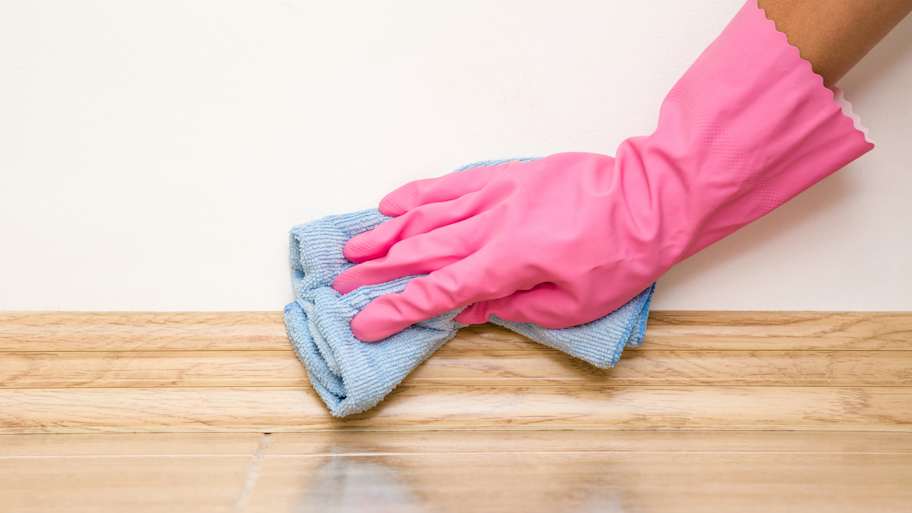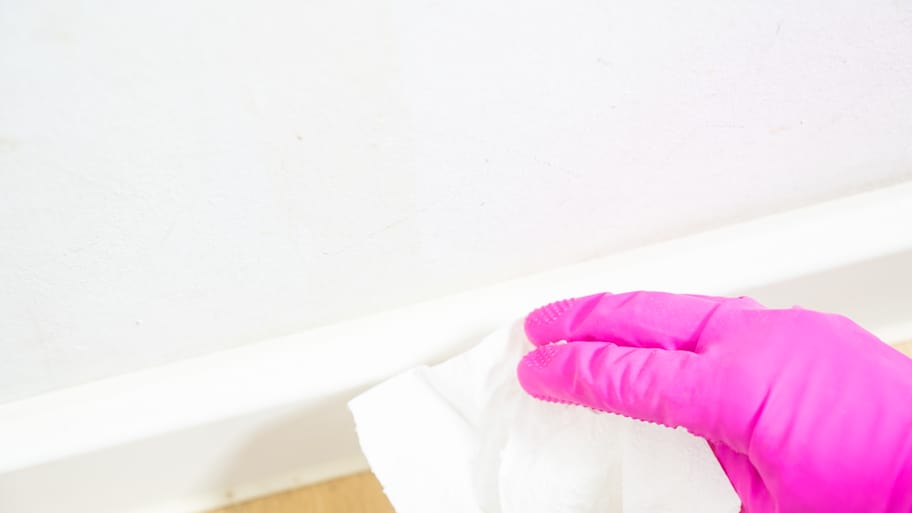
Hiring a house cleaner frees up your schedule and keeps your home spotless. The cost to hire a house cleaner depends on the size of your house, your schedule, and who you hire. Use this guide to understand typical house cleaning prices better.
Clean floors don’t matter if your baseboards are doing you dirty


Even the most sparkling kitchen or freshly vacuumed living room can feel off‑kilter when your baseboards are covered in dust, pet hair, and scuff marks. That’s where our baseboard cleaning tips come into play, helping you bring back that tidy, finished look. Pop in your earbuds and rev up your cleaning playlist: It’s time to make those baseboards shine.
Wondering how to clean your baseboards? Start with a microfiber cloth wrapped over an adjustable mop head, or just grab a long-handled duster; both work great for reaching baseboards without crouching. Glide it along the top edge to sweep away dust, pet hair, and cobwebs.
Work in smooth, steady strokes and angle your tool slightly downward to catch buildup along the ledge. Pro tip: Lightly mist the microfiber cloth or the baseboard with a dusting spray to help trap particles instead of scattering them around.
Your vacuum has a whole host of secret weapons: its attachments. The brush attachment gently lifts dirt from the surface of your baseboards and is especially helpful for textured or decorative trim where grime can settle into crevices.
Once you’ve lifted the buildup, switch to the crevice tool to suction debris from the grooves and the narrow seam where the wall meets the floor. This one-two combo is efficient, easy, and often more effective than dusting.

Spray-and-wipe products make baseboard cleaning quick and hassle-free. Store-bought versions work well, but you can also make your own by mixing a quart of tepid water with a teaspoon of mild dish soap and a splash of white vinegar. This gentle solution cuts through smudges and grime while drying streak-free, and yes, no rinse required.
Vinegar is a safe cleaner for most painted surfaces when properly diluted. Homeowners should avoid using it full-strength, as the acidity can dull the finish over time. Also, avoid harsh ingredients like bleach, ammonia, or anything abrasive, as they can damage the paint.
Ditch the bending by cleaning with a sponge mop. Fill a bucket with warm water and a few drops of gentle detergent, or use a pre-moistened mop pad. Then, simply glide the damp mop along the boards, as if wiping a countertop, but at floor level.
Mopping like this can quickly and comfortably remove most dust and dirt. However, you may still need to get on your hands and knees to reach stubborn grime in nooks and crannies.
This is one of our favorite house cleaning tips. While using a Magic Eraser or a similar melamine sponge product requires a bit of elbow grease, it efficiently removes scuffs from shoes and other types of dirt that cling stubbornly.
Dampen the melamine sponge, squeeze out excess water, and scrub lightly. Work in small circles and stop as soon as the mark is gone to avoid wearing through the paint's sheen. Remember to sweep up the bits of sponge left behind after cleaning.

Dirty caulk lines can ruin the appearance of your clean baseboards and attract mold or mildew in humid environments like bathrooms. To clean, use a soft-bristled toothbrush or a small detailing brush dipped in a cleaning solution and gently scrub.
For a quick refresh, you can also use a cleaning wipe. To combat tough mold and mildew stains, use a spray cleaner containing bleach, let it sit for around a minute, and wipe clean.
After any type of wet cleaning, follow up with a clean, dry cloth. Removing lingering moisture prevents water spots on glossy finishes and blocks dust from settling into the damp surface.
You can add this tip to your housecleaning checklist. Instead of waiting for a deep‑clean marathon, pair a quick wipe‑down with regular chores—say, every time you vacuum using an attachment. Two extra minutes while the vacuum is still out keeps the buildup at bay and makes spring cleaning day feel a whole lot lighter.
Hiring a professional cleaning service can make a big difference if you're dealing with stubborn buildup, allergens, or don't have the time to deep clean every corner.
Working with a local cleaning service means you get expert-level cleanliness without the stress. Pros come equipped with the right tools, products, and know-how to make your baseboards and the rest of your home feel fresh as a spring morning. Regular house cleanings can also help extend the life of your flooring and trim, reduce allergens, and free up your schedule.
From average costs to expert advice, get all the answers you need to get your job done.

Hiring a house cleaner frees up your schedule and keeps your home spotless. The cost to hire a house cleaner depends on the size of your house, your schedule, and who you hire. Use this guide to understand typical house cleaning prices better.

Mattress cleaning cost depends on the number of mattresses being cleaned and the size of each. Use this guide to better understand mattress cleaning prices.

Hiring a house cleaner frees up your schedule and keeps your home spotless. The cost to hire a house cleaner depends on the size of your house, your schedule, and who you hire. Use this guide to understand typical house cleaning prices better.

A professional organizer can help you declutter your home effectively and keep it that way. Explore the numerous benefits of hiring a professional organizer.

Choosing the right cleaner is essential to keeping natural stone surfaces in good condition. Find out more about pH neutral cleaners for stone surfaces.

Construction can leave your home a mess. Use our post-construction cleaning checklist so you can enjoy your updated home free of dust and debris.